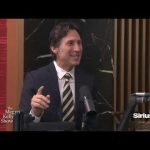Vice President J.D. Vance’s four-day trip to India marks a pivotal moment for American diplomacy and economic strategy, coming at a time when the United States is seeking to assert its leadership on the global stage. The visit, which includes high-level meetings with Prime Minister Narendra Modi, is focused squarely on advancing a robust bilateral trade agreement and deepening ties in defense, energy, and technology. With the Trump administration’s tough new tariffs looming over Indian exports, Vance’s mission is clear: secure a deal that puts American workers and interests first while forging a powerful alliance to counter China’s growing influence.
The timing of this diplomatic outreach could not be more significant. Just as China issued stern warnings to countries considering trade agreements with the U.S., India has welcomed American overtures with open arms. Beijing’s threats of “reciprocal countermeasures” reveal just how much it fears losing its grip on global manufacturing and trade dominance. Yet, rather than cowering to Chinese intimidation, India is seizing the opportunity to become America’s preferred partner, demonstrating that nations still value strong, principled U.S. leadership in a world increasingly threatened by authoritarian bullies.
India’s appeal as an alternative to China is undeniable. The country boasts a large, skilled workforce and is rapidly emerging as a hub for advanced manufacturing, particularly in sectors like semiconductors and defense technology. American companies are eager to diversify their supply chains, and India’s willingness to engage in reciprocal trade talks is a breath of fresh air after years of one-sided deals with Beijing. The U.S.-India partnership promises not only to create jobs and spur innovation at home but also to ensure that critical industries are no longer at the mercy of the Chinese Communist Party.
Vance’s visit also highlights the Trump administration’s no-nonsense approach to foreign policy. By putting pressure on partners to negotiate fair terms and refusing to back down in the face of Chinese threats, the U.S. is making it clear that it will not tolerate economic coercion or unfair trade practices. This is a welcome change from the appeasement and indecision that defined previous administrations. American strength, backed by tariffs and tough negotiations, is finally being used to secure real wins for American workers, farmers, and entrepreneurs.
Meanwhile, the administration’s stance on Ukraine underscores a broader shift toward prioritizing American interests. Secretary of State Marco Rubio’s warning that the U.S. will abandon its peace push if there is no progress sends a clear message: America’s patience is not unlimited, and endless foreign entanglements are no longer on the table. In both Asia and Europe, the U.S. is demanding results, not empty promises. As Vance’s trip demonstrates, America is once again leading from a position of strength, building alliances, defending its interests, and refusing to be bullied by rivals. This is the kind of assertive, America-first leadership that voters demanded, and it’s paying dividends on the world stage.




